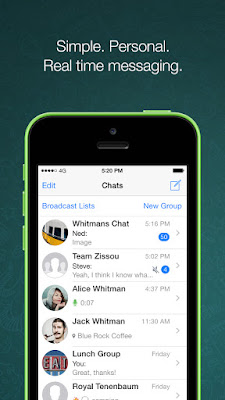Hi,
Computer Assisted Language Learning (CALL)
We know that nowadays the usage of internet
and technology growth rapidly that can perk the students’ interest in learning
especially in language learning. For example, Computer Assisted Language
Learning (CALL) is a term that used to refers to the area of technology and
second language. There are several types of CALL programs such as web-based
exercise, games, Microsoft Word, instant messaging to facilitate language
learning. This type of computer assisted does have its own advantages and
disadvantages. For example, computer can provide immediate and fixed feedback but it
cannot provide individualized feedback more than what has been programmed and coded.
 |
| British Council : Language Learning |
Before we look at the latest invention in CALL there are three stages of the progression:
⇒Behaviouristic CALL
⦁This stage of CALL that developed in 1960 involves repetitive drill and practice for the programme instruction.
⦁Used for Audio-Lingual method and perfect pronunciation model
⇒Communicative CALL
⦁It is developed around 1970 to 1980 focusing on the usage of language rather than grammar.
⦁Students have more control, choice and interaction in answering.
⇒Integrated CALL
⦁The Integrated CALL is basically a integration of real world material into CALL. It started with the usage of CD-ROM where the large amounts of authentic media can be stored and used as materials for learning language.
The Internet & CALL
⦁ The advancement of CALL is influenced by the Internet to connect and communicate information as the learners are not just recipients but also communicators and creators.
Computer Mediated Communication (CMC)
⦁ CMC can be defined as two-way communication that occurs through the use of two or more electronic devices.
⦁ There are two types of CMC which are
↪Asynchronous
This type of CMC is where the participants do not need to be online and available at the same time but read and respond as their wanted to. It also does not provide immediate feedback to the participants.
For example ↴
 |
 |
| Discussion Boards |
↪Synchronous
Synchronous is a direct communication where all parties involved in the communication. It is also called as face-to-face interaction where the participants could obtain immediate feedback.
For examples ↴
 |
| Instant Messaging : Whatsapp Messenger |
In conclusion, the advancement of the technology does improve CALL and many of the ideas has been changing. This type of language learning could perk the interest of the students to learn language in more interesting way. For example, using games and online learning as well as web based exercise. There are also advantages and disadvantages of using computer assisted such as learning experience for the students becomes more entertaining and fun. One of the disadvantages is the computer could not provide individualized feedback more than what has been programmed and coded.
SEARCH ENGINES
Google and Yahoo have been our choices to use for finding information by entering keywords.Those search engines have their own database and each of them uses software to collect data from the Web to include in their database. There are 4 parts of a search engine which are:
⇒Database
➸To store references to Webpages
➸ A storage where all the Webpages stored
➸Contains only essential information of Webpages
 |
| Database |
⇒Web-Crawlers
➸A web-crawler also known as 'bot' or 'spider' is a program that visit Websites and read their pages and other information in order to create entries for a search engines.
➸ The purpose of web-crawler is to provide the search engine the up-to-date data.
 |
Web-Crawler |
⇒User Interface
➸ An interface is a set of commands or menu through which user communicates with the program.
➸ Using a simple design and user friendly are the important features in creating an interface. For example, using less photos and words so that the user will not be uncomfortable to search any information.
 |
| Google Interface |
⇒Information Retrieval System
➸ It is a system that used to match the user's query to indexed webpages found in database.
 |
| Information Retrieval System |

very interesting. Got lots of information!
ReplyDelete